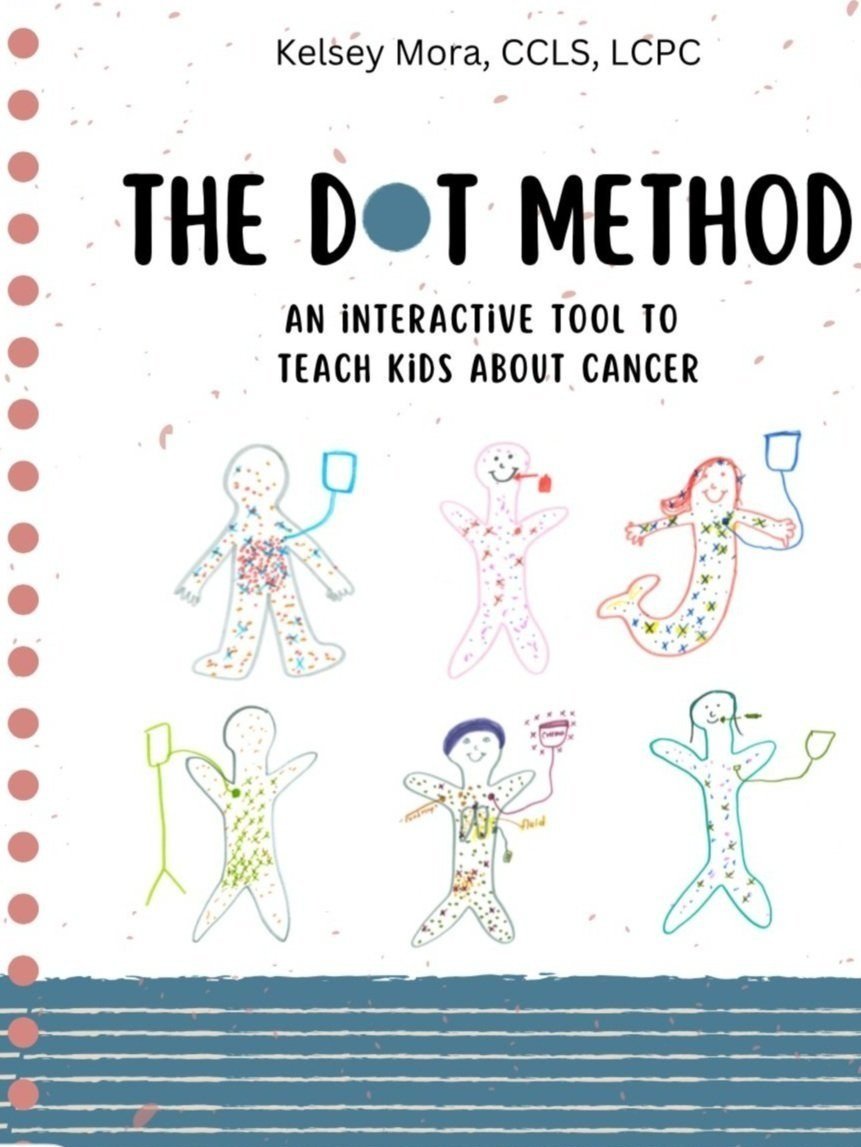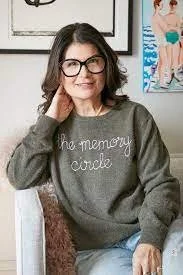About
The Dot Method
By Kelsey Mora
Included below:
-
Discounts are available on bulk orders of 20 copies or more. US shipping included. Ideal for hospitals, clinics, and non-profits.
-
The Dot Method has been carefully reviewed and endorsed by medical & support professionals, parents, and creators.
-
A list of common questions and answers about how The Dot Method works.
-
A blog with additional guidance on using The Dot Method in different setting and circumstances.
The Dot Method is the first of The Method Workbooks.
It’s also the first of it’s kind. A workbook tool that uses hands-on activities to make cancer less scary, less confusing, and more approachable for kids and caregivers.
Available on Amazon or through Kelsey Mora, PLLC in discounted bulk orders.
Discounted bulk orders available
for hospitals, clinics, and
non-profit organizations*.
*International shipping costs apply
Praise for The Dot Method
Common questions about The Dot Method:
Who has cancer in the workbook?
What is so unique about The Dot Method is that it is intended for children impacted by any cancer relationship.
The artist of the book is the child who uses it. On page 4 the child writes the name of the person who has or had cancer and uses the body outline to create that person. The child could be creating the workbook about themself, a sibling, a parent, or another relative or friend.
Additionally, the workbook allows for different types of cancers, treatments, and outcomes to be expressed. It’s truly an ‘everybody’ book.
What age is The Dot Method for?
The Dot Method is most appropriate for children age 4-12 years however it can be completed with younger and older children. On page x, there is a guide for how to use and modify the workbook with different ages including 0-4, 5-6, 7-10, and 11 and above.
For younger children, the dots can be described as healthy and and unhealthy or broken cells. Over time, a family may revisit the workbook and explain more as a child ages and develops.
Should you complete the workbook in one session?
This depends on the child. Some children may complete the workbook from cover to cover and others may complete it over time with a parent, caregiver, or clinician. It’s also common to re-visit the workbook as cancer evolves.
Pages 1-12 are focused on learning about cancer cells and treatment. Pages 13-19 are focused on feelings and coping with cancer. This is a natural way to break up the content if needed.
Should The Dot Method be completed with an adult?
The Dot Method is written so that an older child could complete it independently, however it is intended to prompt meaningful discussions between kids and adults.
If the workbook is being purchased or provided to a parent, it is advised that the parent preview the workbook in its entirety first including the guide and glossary at the front. It is written so that someone with little experience talking to children about cancer could feel comfortable using it together with a child.
The Dot Method is also a great resource for clinicians to use with their patients in the hospital or clinic.
Should each child in the family have their own workbook?
Ideally each child in the family has their own copy because there is something empowering about having a tangible workbook that is their own. Almost every page has an interactive component where the child is writing or drawing in the physical workbook.
However, there are extra body outlines on page 22 specifically for the cell and treatment education. Additionally, if all of the children in the family have the same relationship to the person with cancer, it may be possible to complete the workbook as a family.
Can you use The Dot Method without saying the word cancer?
The Dot Method uses the word cancer, but like any resource - it is a guide. Parents and caregivers should feel comfortable throughout the workbook exchanging the word cancer for unhealthy or broken cells if desired. The purpose of The Dot Method is to teach kids that cancer is a problem with the cells and how treatment works. When discussing cancer using The Dot Method, it can actually make the word ‘cancer’ less scary and helps adults feel more comfortable talking about cancer in an age-appropriate but honest way.









